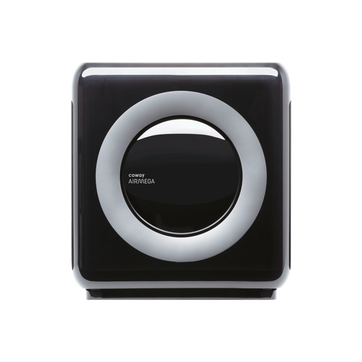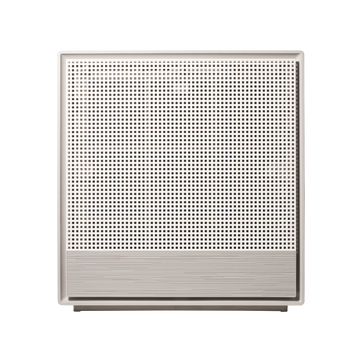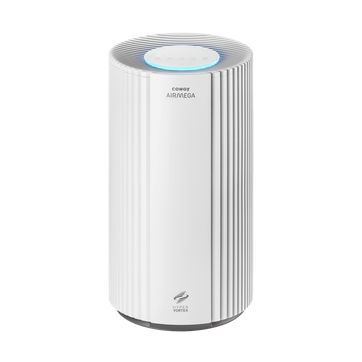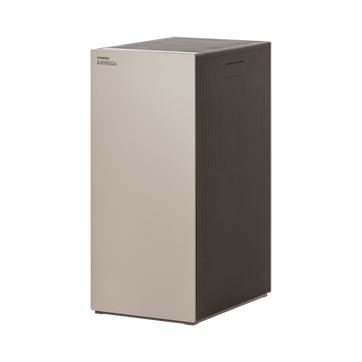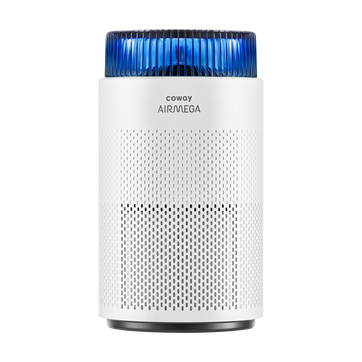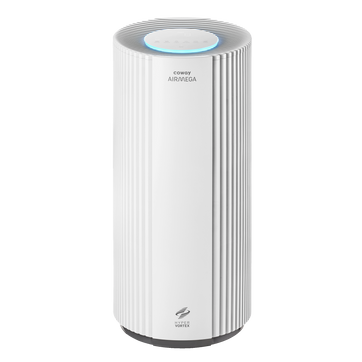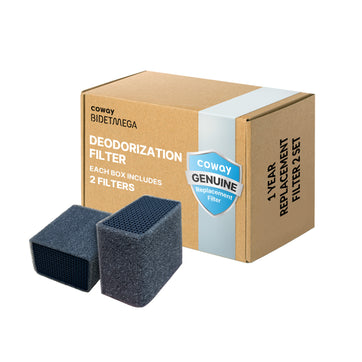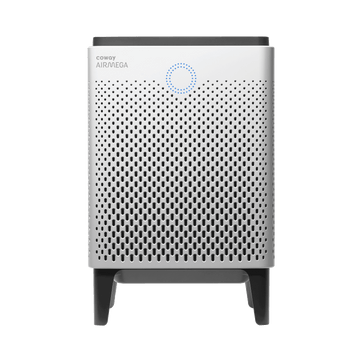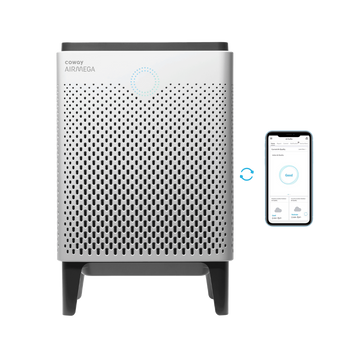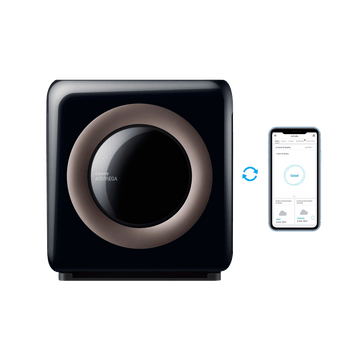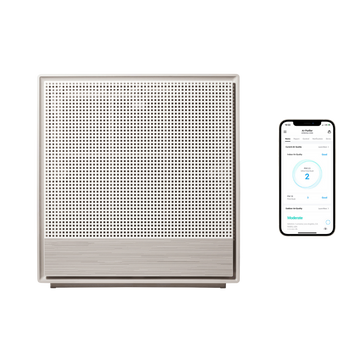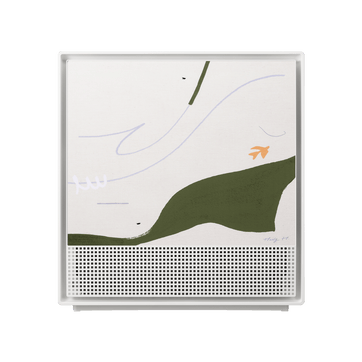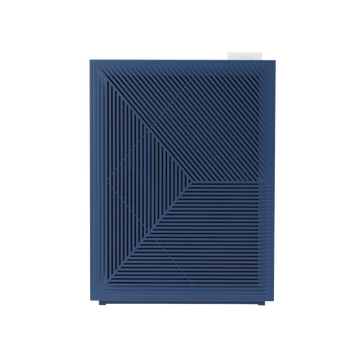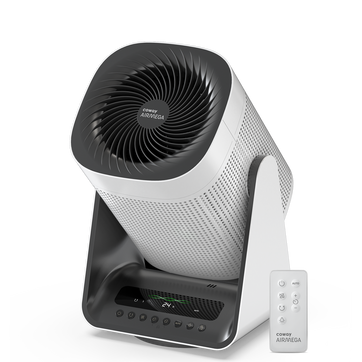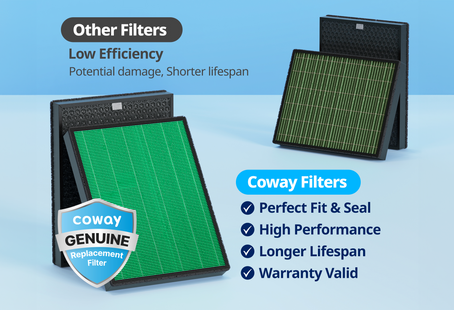
Home Kitchen Air Purifiers Odors: Cooking Creates Indoor Air Pollution
Why Your Kitchen Needs More Than a Range Hood
Home cooking is comforting. It can also compromise indoor air quality. Research shows that everyday cooking activities release airborne pollutants, including carbon monoxide, nitrogen dioxide, fine smoke particles, and tiny aerosols, which drift beyond the stove. Even when the kitchen smells fresh, pollutants can linger in the air and move throughout your home.
This guide explains where kitchen pollution originates, why range hoods are beneficial but limited, and how a kitchen air purifier with a HEPA filter and activated carbon filter helps clear the air while you cook.
The Source of Invisible Kitchen Pollution
When you sauté, sear, or boil with gas burners, small but harmful pollutants are released into your home’s air. Searing and frying generate tiny particles that travel far beyond the cooktop. At the same time, heated oils and fats release vapors, cooking odors, and volatile organic compounds that persist long after the meal is finished.
These pollutants don’t stay confined to the kitchen. Warm air currents carry them into hallways, bedrooms, and living areas, where they can affect indoor air long after you’ve finished cooking.
Why Range Hoods Are Not Enough
Range hoods are a valuable first step, but performance varies widely. Many homeowners don’t use them at full fan speed or every time they cook. Some hoods recirculate air through thin carbon filters rather than venting outdoors.
Because there’s no standard clean air delivery rate for range hoods, it isn’t easy to determine their effectiveness. Without consistent use and strong airflow, pollutants build up quickly and spread throughout the house.
The Role of a Kitchen Air Purifier
A dedicated air purifier for kitchen cooking complements your hood by targeting the air that escapes it. The best air purifiers utilize multi-stage filtration to capture both particles and gases that typical hoods often miss.
A washable pre-filter captures grease, mist, and dust. A true HEPA filter removes at least 99.97% of fine particles, down to 0.3 microns, such as smoke. Finally, an activated carbon layer adsorbs gases and kitchen odors that particle filters cannot catch.
Together, these filters ensure the air you breathe is clean, not just less smelly.
Smart Purification With Coway Airmega
Coway Airmega purifiers are designed to detect air quality changes caused by cooking and respond automatically.
Key features for kitchens
-
Dual HEPA filtration with embedded activated carbon to capture both particles and gases
-
Auto Mode that raises fan speed when sensors detect higher pollution and lowers it once the air is clean
-
Quiet operation that keeps the kitchen peaceful, even at higher speeds
-
Coverage for large rooms and open-concept spaces is measured in square feet
-
Simple replacement filters with status lights for easy maintenance
With real-time sensing, your purifier responds in real-time as you cook, rather than relying on a fixed timer.
Why Activated Carbon Matters
Cooking releases invisible gases that cause lingering cooking odors. Activated carbon contains millions of micropores that trap these molecules. Without a strong carbon stage, even the best air purifiers for particles may fail to remove odors and gases.
Look for models that utilize substantial carbon material, such as pellet or honeycomb designs, which allow for more contact time and improved odor removal.
Sizing and Placement Tips
-
Match purifier capacity to the kitchen’s square footage, especially if it opens into a living area.
-
Place the purifier on the edge of the cooking space, not beside the stove, where the heat is highest.
-
Please turn it on before cooking, keep it running during the meal, and allow it to run for at least 30 minutes afterward. Auto Mode can manage this automatically in conjunction with optimal results.
Filter Care and Replacement
Kitchen use can shorten filter life due to the accumulation of grease and smoke. Follow these general guidelines:
-
Pre-filter: Clean or vacuum monthly.
-
HEPA filter: Replace every 6 to 12 months, depending on use and air quality.
-
Activated carbon filter: Replace every 3 to 6 months, especially if you cook frequently.
Choose purifiers with filter indicators to help you stay on schedule.
Air Purifiers vs. General-Purpose Options
Not every air purifier is built for the kitchen. Many compact models focus on dust or pet dander, but lack the power and odor control required for cooking. When comparing options:
-
Verify that the unit features a genuine HEPA filter.
-
Check for a thick layer of activated carbon, not just a perfumed pad.
-
Look for a built-in air quality sensor and visible air quality indicator to track real-time changes.
-
Ensure that replacement filters are easily accessible.
Kitchen air is different from that of other rooms; grease and heat require stronger filtration and more durable materials.
Quick Start: A Simple Kitchen Clean-Air Routine
-
Turn on the range hood as you start cooking.
-
Set your Airmega to Auto Mode.
-
Use lids and lower the heat when possible to reduce emissions.
-
After cooking, wipe surfaces and let the purifier run until the air quality indicator shows clean air.
-
Rinse or vacuum the pre-filter regularly.
Small habits make a noticeable difference in indoor air quality.
FAQs
Will a purifier eliminate cooking odors?
A purifier with a robust activated carbon filter significantly reduces oenti; howe ventilationer,n still helps remove gases faster.
Can I quickly use an air conditioner to clean the kitchen air?
Air conditioners circulate air for cooling, not for high-efficiency filtration. They don’t remove smoke or gases effectively.
How loud will it be while I cook?
During heavy use, the fan speed increases to move more air. Coway purifiers maintain low noise levels even at high speeds.
Can I place the purifier on a kitchen counter?
Yes, as long as it’s away from direct heat and has precise airflow around the intake and outlet.
The Coway Advantage in Kitchens
-
Multi-stage filters designed for real cooking environments
-
Intelligent sensing that adjusts automatically to air quality changes
-
Simple design and quiet operation that fits naturally into any kitchen
Cooking should be joyful. The air should be clean.
Final Thoughts: Breathe Easier, Cook Freely
Range hoods are helpful but limited. A well-sized kitchen air purifier with a true HEPA filter, activated carbon, and intelligent controls fills the gap by capturing what your hood misses.
With Coway Airmega, you can cook freely while protecting your home from smoke, gases, and odors that linger long after mealtime. Choose the right size for your space, give it room to breathe, and let it quietly keep your air fresh and clear—clean air, better meals, and a healthier home.
Disclaimers
1Coway air purifiers have been proven to trap dust, pollen, dander, viruses and bacteria in the air based on KCL (Korea Conformity Laboratories) testing.They have been tested in a 30㎥ size chamber according to the Korea Air Cleaning Association standard (SPS-KACA 002-132:2022 Modified) to measure the 0.01㎛ size of particle removal rate. It was tested on maximum airflow speed in normal room temperature and humidity conditions. The performance may vary in the actual living environment of customers.
→ Tested with Airmega Aim, 50, 100, 150, 160, Tower AP-1216L, Mighty AP-1512HH, MightyS AP-1512HHS, 200M, Icon, IconS, 230, 240, 250, 250 Art, 250S, 300, 300S, 350, 400, 400S, 450, ProX
299.97% of viruses, bacteria, fungi and pollen were verified to be removed from the air for Coway air purifiers which have Green True HEPA™ filter applied based on the Japan Food Research Laboratories(JFRL) testing according to JEM 1467 standard.
→ Tested with Coway Airmega Mighty AP-1512HH, MightyS AP-1512HHS, 250, 250 Art, 250S, 300, 300S, 400, 400S
→ All tested by JFRL and received above result within below time.
4The concentration of ammonia, acetaldehyde and acetic acid were proven to be removed within 30 minutes by FCG Research Institute, Inc. Human Life Science Lab. It is not a demonstration result in the actual use space. Not all odors and gases may be supported. → Tested with Coway Airmega 150, 160, Mighty AP-1512HH, MightyS AP-1512HHS, 400, 400S
5The coverage area of the air purifier is based on an area where the air cleaner can make two air changes per hour (ACPH). An air change per hour translates to how many times an air purifier can clean an area, assuming the height of a ceiling to be 8 ft, in one hour. Therefore ** means two air changes per hour means that the cleaner can clean the area once every 30 minutes and * means air changes per hour means that the air purifier can clean the area once every 60 minutes.
10Terms and conditions apply. Discounts, including promotions, coupons, bundle discount and subscription discount, cannot be stacked on top of other coupons. During promotional periods, discount codes will not be able to be applied to orders. Promo codes may apply to products only—filters, accessories, and new products within 3 months of the release date are not included.
11Based on Coway R&D internal laboratory testing, activated carbon filtration was shown to remove up to 95% of ammonia odors within 40 minutes, and up to 99% of fecal odors within 20 minutes. Actual performance may vary depending on usage conditions.

